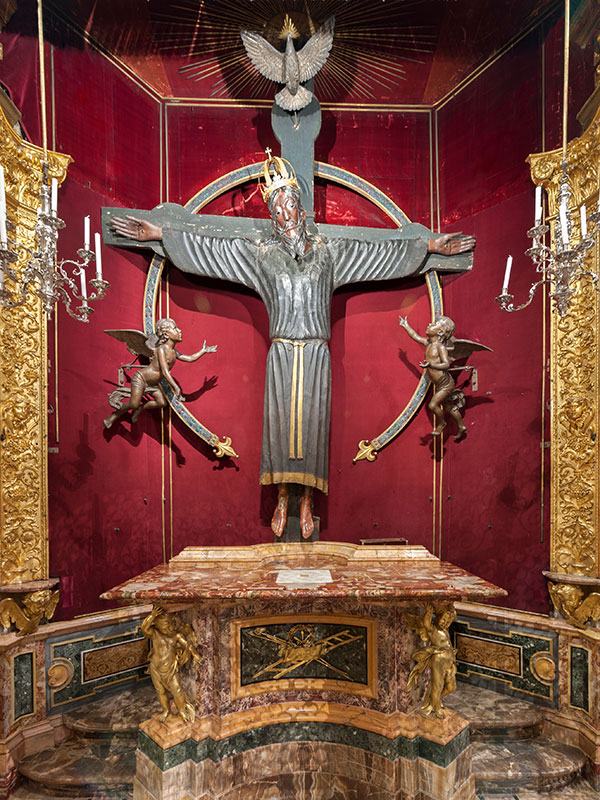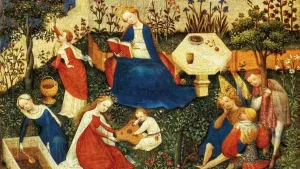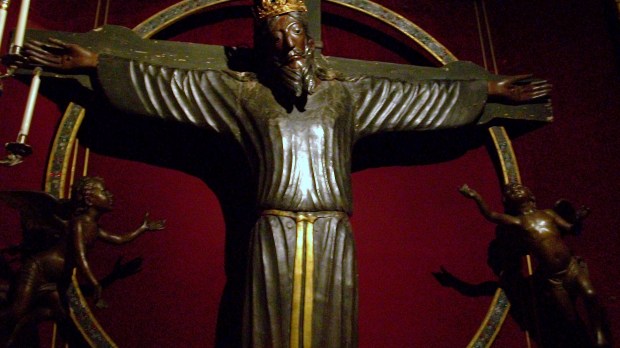Lenten Campaign 2025
This content is free of charge, as are all our articles.
Support us with a donation that is tax-deductible and enable us to continue to reach millions of readers.
Within the imposing walls of Lucca’s Cathedral of San Martino (Italy), an aura of awe surrounds the Volto Santo – the Holy Face, an ancient wooden crucifix, standing tall and commanding respect. It has captivated both pilgrims and scholars for centuries. More than just a work of art, the Volto Santo is at the core of a fascinating legend (interwoven with some historical intrigue), making it a powerful symbol of faith and a fascinating portal to the world of medieval Europe.
An ancient local tradition attributes the carving to Nicodemus, a disciple of Jesus who assisted in his burial. Not being an expert sculptor, he would not have been able to give the face the desired shape. Tired and disappointed, he fell asleep without finishing the work but, as he awoke, he found it miraculously finished by the hand of an angel.
Another legend has it that the crucifix miraculously arrived in Lucca, in a ship with no crew whatsoever, around 782. Scientific research, however, offers a more nuanced perspective. Radiocarbon dating suggests that the wood and canvas were created between 770 and 880. This data is somewhat consistent with the Legend of Leobino, which recounts the arrival of the Holy Face from Palestine in 782.
Although there are discrepancies, the year 782 has historical significance because it marks the reign of Charlemagne, a period marked by a surge in the veneration of religious relics. It’s plausible that the crucifix, made elsewhere, was brought to Lucca during this period, further cementing its status as a treasured object within the city.

Beyond the intriguing legend, the Volto Santo itself demands closer examination. Standing eight feet tall, the life-size crucifix depicts Jesus in a solemn and dignified posture. The material, cedar from the eastern Mediterranean, offers clues to its possible origin and adds to its historical intrigue. The intricate details and expressive face, though weathered by time, inspire as much awe and reverence as they did in the 8th century.
The significance of the Holy Face goes beyond its artistic value and compelling, pious legend. It serves as a tangible link to medieval Christian beliefs and practices –particularly the veneration of relics, as the sculpture was considered to be the work of a sainted biblical figure (that is, Nicodemus himself). Pilgrims flocked to Lucca seeking spiritual guidance and a connection to God through the Volto Santo.
Currently undergoing a meticulous restoration process within the cathedral, the Holy Face remains a potent symbol for the city of Lucca. While the debate over its exact origin and history continues, its power as a religious and cultural icon remains undeniable.



